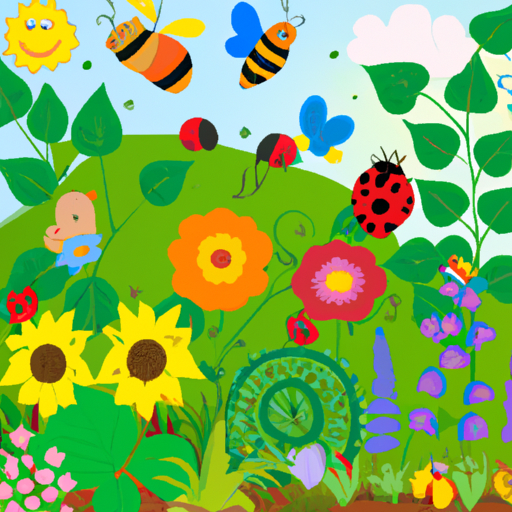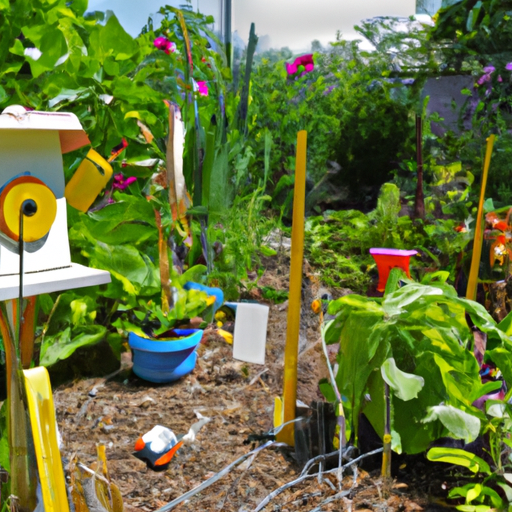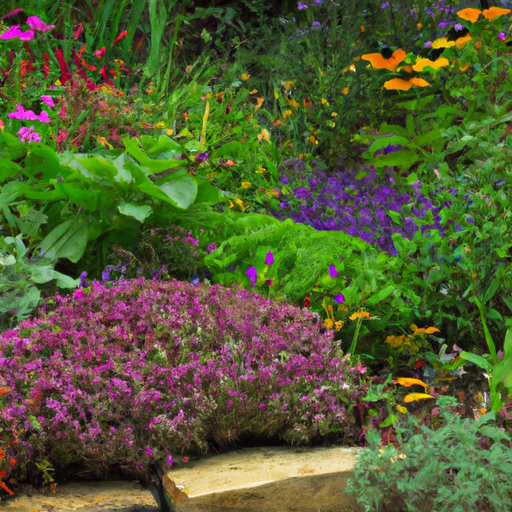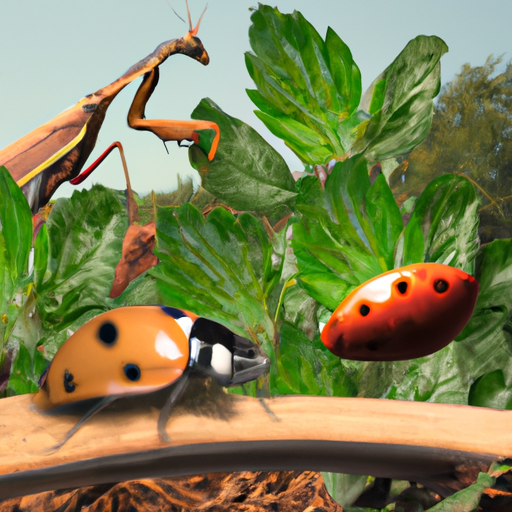If you’re looking for a natural and effective way to control pests in your garden, companion planting is the answer.
Companion planting involves growing different plants together that benefit each other in some way. This technique can attract beneficial insects that will help keep harmful bugs at bay.
Attracting beneficial insects with companion planting is one of the most sustainable ways to maintain a healthy garden ecosystem.
By choosing the right combination of plants, you can create an environment where beneficial insects thrive and protect your plants from damage caused by pests.
In this article, we’ll explore how companion planting works and which plant combinations are best suited for attracting beneficial insects to your garden.
So grab your gardening gloves and get ready to learn about this powerful technique!
Understanding Companion Planting
As a Master Gardener, it’s important to understand the ins and outs of companion planting.
One of the best Companion Planting Tips is that not all plant pairings are created equal. Some plants work well together because they repel pests or improve soil quality, while others can actually inhibit each other’s growth.
Common Misconceptions about companion planting include the belief that any two plants grown next to each other will automatically thrive. In reality, successful companion planting requires careful consideration of factors like sunlight needs, water requirements, and root systems.
By taking these factors into account and carefully selecting complementary plant combinations, you can create a thriving garden ecosystem that attracts beneficial insects and supports healthy plant growth without relying on harmful pesticides or chemicals.
The Benefits Of Attracting Beneficial Insects
Now that we understand the concept of companion planting, let’s delve into how it can benefit our gardens.
Imagine a beautiful symphony where each instrument plays its part to create a harmonious melody. Similarly, beneficial insects play an important role in creating a thriving ecosystem in our garden beds.
By attracting these helpful critters through companion planting, we provide them with food and shelter, while also reaping the benefits of their services such as pollination assistance and pest control strategies.
Ladybugs, lacewings, and hoverflies are just a few of the good bugs that can be enticed by specific companion plants like dill or yarrow. So not only do they add beauty to your garden, but they also work tirelessly behind the scenes to keep your veggies healthy and fruitful.
Incorporating companion planting techniques to attract beneficial insects is truly a win-win situation for both you and your garden!
Choosing The Right Plants For Companion Planting
When it comes to companion planting, selecting the right plants is crucial.
Plant combinations should be chosen based on insect preferences and their ability to attract beneficial insects. For example, marigolds can repel nematodes while also attracting hoverflies that prey on aphids. Similarly, planting dill or fennel near tomatoes can attract parasitic wasps that feed on tomato hornworms.
It’s important to research which plants work well together and which ones may hinder each other’s growth. Additionally, consider the specific needs of your garden such as soil type and sun exposure when choosing plant combinations.
By carefully selecting the right plants for companion planting, you’ll be able to create a thriving ecosystem in your garden that benefits both your crops and local wildlife.
Techniques For Successful Companion Planting
As Master Gardeners, we know that successful companion planting is a technique that requires some planning and preparation.
One of the essential techniques to consider when companion planting is crop rotation. Crop rotation helps prevent soil-borne diseases and pests from building up in the soil by alternating crops each season. This practice also improves soil fertility as different plants absorb various nutrients from the soil, so rotating them can replenish depleted soils with those required for optimal growth.
Another crucial aspect of successful companion planting is preparing your soil adequately before planting. Preparing your soil means loosening it to improve drainage and oxygenation, removing weeds or debris, and adding organic matter such as compost or aged manure to enrich the soil with necessary nutrients.
A healthy garden bed will yield healthier plants that are less prone to pest attacks and diseases. By implementing these two critical techniques, you’ll be on your way to a thriving garden full of healthy plants! Remember always to plan ahead and make sure your chosen plant combinations work well together for mutual benefits like improved yields and insect control.
Happy gardening!
Creating A Healthy Garden Ecosystem
As Master Gardeners, we understand the importance of creating a healthy garden ecosystem.
One key aspect is natural pest control through companion planting and promoting biodiversity. By attracting beneficial insects to our gardens with certain plants, we can reduce the need for harmful pesticides and create a balanced environment where pests are kept in check naturally.
Additionally, by incorporating a variety of plant species, we encourage diverse populations of insects and other critters that contribute to a thriving ecosystem.
Remember, a healthy garden is not just about pretty flowers or abundant harvests – it’s also about supporting the delicate web of life that exists within it.
Frequently Asked Questions
What Are Some Common Mistakes People Make When Choosing Plants For Companion Planting?
Ah, common mistakes. It seems like every gardener has made them at some point or another.
Improper spacing and choosing non-native species are two of the most frequent blunders in companion planting.
Now, if you’re really committed to this practice (and aren’t we all?), then it’s time to step up your game. You want to attract beneficial insects, right?
Well, my dear friend, that means you need to be strategic about the plants you choose. Stick with herbs and flowers as your best companions, while avoiding high nitrogen plants like the plague.
And please, for the love of soil health, do your research on what grows best in your region before committing to a plant selection.
Happy gardening!
Can Companion Planting Attract Harmful Insects As Well?
Can companion planting attract harmful insects as well?
Yes, it’s possible.
While companion planting can be effective in attracting beneficial insects to your garden, it’s important to monitor the plants you choose and prevent any potential harm from unwanted pests.
One way to do this is by selecting pest-resistant plants or incorporating natural insect repellents such as garlic or neem oil into your gardening routine.
Remember that maintaining a healthy balance of good bugs and bad bugs is key for a thriving garden ecosystem.
As a Master Gardener, it’s crucial to stay vigilant and take preventative measures when necessary to ensure the success of your crops.
How Can I Tell If The Beneficial Insects I’m Attracting Are Actually Staying In My Garden?
When it comes to measuring success in your garden, tracking populations of beneficial insects is key. But how can you tell if the insects you’re attracting are actually staying in your garden?
One simple way is to regularly monitor your plants for signs of their activity, such as evidence of pollination or pest control.
You can also set up traps and use sticky cards to capture and identify different insect species.
By taking these steps, you’ll be able to track changes in population over time and ensure that your companion planting efforts are paying off.
Is It Possible To Attract Beneficial Insects Without Using Companion Planting?
It is certainly possible to attract beneficial insects without relying on companion planting.
Integrated pest management techniques can be employed to create a welcoming environment for these helpful creatures.
By reducing pesticide use and providing food, water, and shelter for beneficial insects, you can support the natural balance of your garden ecosystem.
Utilizing biological control methods such as releasing ladybugs or using nematodes can also aid in controlling pests while promoting the presence of beneficial insects.
Remember that creating a healthy habitat for all types of insects is key to maintaining a thriving garden.
Are There Any Types Of Plants That Should Not Be Used For Companion Planting?
When it comes to companion planting, there are certain types of plants that should be avoided. These include aggressive growers like mint and horseradish, as they can take over your garden space and crowd out other plants.
Additionally, some plants have negative effects on their neighbors – for example, walnut trees release a chemical called juglone that can harm nearby plants.
As a Master Gardener, it’s important to carefully consider the impact each plant will have on its surroundings before incorporating it into your garden plan.
Conclusion
As a Master Gardener, I must stress the importance of companion planting for attracting beneficial insects to your garden. However, it is important to avoid common mistakes such as pairing plants that have conflicting needs or not considering the size and growth habits of each plant. It’s also possible that some unwanted pests may be attracted alongside the helpful ones.
To ensure that the beneficial insects are staying in your garden, keep an eye out for signs such as increased pollination or decreased pest damage. And if you’re looking to attract these helpful bugs without using companion planting, consider providing alternative habitats like bee houses or installing bird feeders.
Remember, just like how every ingredient plays a vital role in a delicious recipe, each plant in your garden plays its own part in creating a harmonious ecosystem.
With careful consideration and planning, you can create a beautiful landscape filled with diverse flora and fauna – akin to a symphony orchestra where each instrument contributes to the overall harmony.
Happy gardening!






